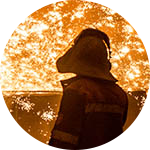Understanding Pig Iron Prices Today: A Comprehensive Guide
2025-08-12 09:35:15 hits:0
Introduction
In the ever-evolving world of ferrous metals, pig iron holds a significant place due to its pivotal role in steel manufacturing and various industrial applications. Understanding the dynamics of pig iron prices today is essential for stakeholders ranging from manufacturers to investors. This article delves into the intricacies of pig iron pricing, offering a detailed analysis of current trends, historical data, and future projections. By the end of this comprehensive guide, you will have a clearer understanding of the factors influencing pig iron prices and how they impact the global market.
What is Pig Iron?
Pig iron is a basic form of iron produced from iron ore in a blast furnace. It is an intermediate product of the steelmaking process, containing a high carbon content, making it brittle and not directly usable as a material. However, it serves as a crucial raw material for producing steel and other alloys. The term "pig iron" derives from the traditional method of casting the melted iron into ingots resembling piglets suckling from a sow.
Current Pig Iron Prices
Regional Price Variations
Pig iron prices vary significantly across different regions due to factors such as local demand, production costs, and transportation logistics. As of today, the price of pig iron is influenced by regional economic conditions, trade policies, and technological advancements in production methods.
Factors Influencing Pig Iron Prices
Understanding the factors influencing pig iron prices is crucial for predicting future trends and making informed decisions.
Historical Pig Iron Price Trends
Analyzing historical pig iron price trends provides valuable insights into market behavior and helps forecast future movements. The Shanghai Metals Market offers a comprehensive historical price chart, showcasing fluctuations over the years due to various economic and industrial factors.
Key Historical Insights
Future Projections for Pig Iron Prices
Predicting future pig iron prices involves analyzing current trends, economic indicators, and potential geopolitical developments. Industry experts suggest a cautious optimism for stable prices, contingent on several factors:
How to Navigate Pig Iron Market Dynamics
For businesses and investors looking to navigate the pig iron market, understanding price dynamics and market conditions is essential. Here are some strategies to consider:
Conclusion
Pig iron prices today are influenced by a complex interplay of regional demand, production costs, and global economic factors. By understanding these dynamics, stakeholders can make informed decisions and strategically navigate the market. As the industry continues to evolve, staying abreast of technological advancements and geopolitical developments will be key to anticipating future price movements. Whether you are a manufacturer, investor, or industry enthusiast, leveraging this knowledge will empower you to thrive in the ever-changing world of pig iron.
Call to Action
Stay ahead in the ferrous metals market by subscribing to our newsletter for regular updates on pig iron prices and industry trends. Share this article with colleagues and industry peers to spread valuable insights and foster informed decision-making. Explore related topics on our website to deepen your understanding of the metals market and its impact on global industries.
Blog Author Profile
DAWN | Pig Iron & Castings Procurement Advisor 18 years in the foundry trenches give me an edge: I know how pig iron’s chemistry impacts casting quality and can troubleshoot defects like cracks and porosity. With a 1M MT/year pig iron and 60k MT/year casting output from our in-house factory, plus 200+ verified suppliers on our platform, we offer fast price comparisons. Expect a 24-hour inquiry response—my goal? Not just closing deals, but being your go-to partner in the foundry world.
18 years in the foundry trenches give me an edge: I know how pig iron’s chemistry impacts casting quality and can troubleshoot defects like cracks and porosity. With a 1M MT/year pig iron and 60k MT/year casting output from our in-house factory, plus 200+ verified suppliers on our platform, we offer fast price comparisons. Expect a 24-hour inquiry response—my goal? Not just closing deals, but being your go-to partner in the foundry world.

 en
en  fra
fra  de
de  ru
ru  ara
ara  gle
gle  it
it  jp
jp  kor
kor  th
th  zh
zh 


